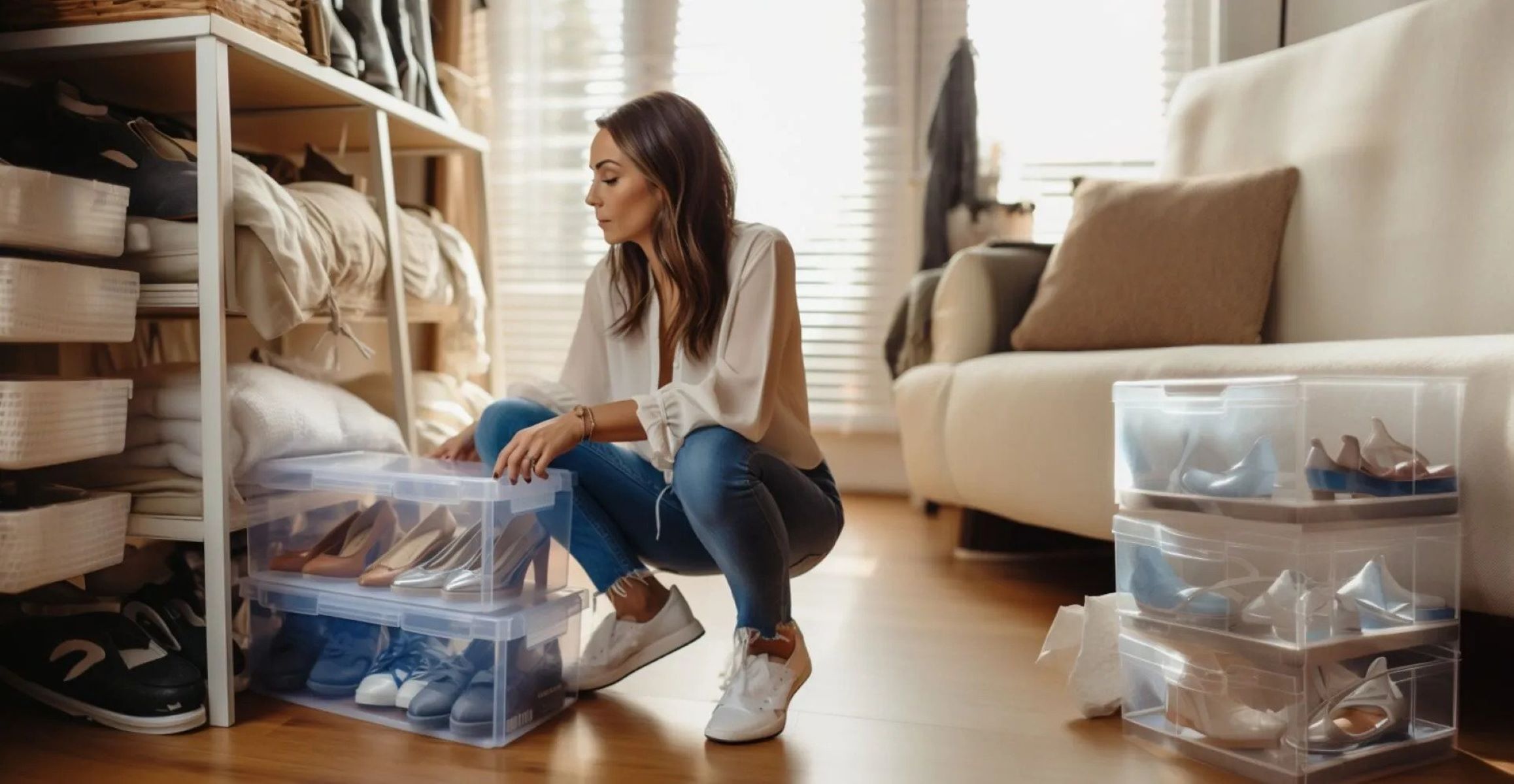

Articles
How To Store Shoes To Prevent Mold
Modified: August 30, 2024
Learn effective methods for storing shoes and preventing mold with these informative articles. Keep your footwear fresh and mold-free.
(Many of the links in this article redirect to a specific reviewed product. Your purchase of these products through affiliate links helps to generate commission for Storables.com, at no extra cost. Learn more)
Introduction
Shoes are an essential part of our daily lives. They not only protect our feet but also complete our outfit. Whether you have a collection of designer heels or a closet full of sneakers, proper shoe storage is crucial to maintain their condition and ensure they last for a long time.
One of the biggest challenges when it comes to storing shoes is preventing mold. Mold is a type of fungus that thrives in damp and dark environments. It can cause discoloration, unpleasant odors, and even damage the shoes themselves. Once mold sets in, it’s challenging to remove and can be detrimental to your shoes’ lifespan.
In this article, we will discuss the causes of mold in shoes and provide practical tips on how to store your shoes properly to prevent mold growth. We will also cover the importance of preparing your shoes for storage, choosing the right storage location, utilizing proper shoe storage containers, cleaning and treating your shoes, using moisture-absorbing products, regularly inspecting your stored shoes, and removing mold from already affected shoes.
By following these steps and implementing a proactive approach to shoe storage, you can ensure that your beloved pairs are protected and ready to wear whenever you need them.
Key Takeaways:
- Proper shoe storage, including cleaning, drying, and using moisture-absorbing products, is crucial to prevent mold growth and maintain the longevity of your footwear collection.
- Regularly inspecting stored shoes and taking immediate action to remove mold can salvage your shoes and protect them from further damage.
Read more: How To Store Thigh High Boots
Understanding the Causes of Mold in Shoes
Mold in shoes is primarily caused by moisture and lack of airflow. When shoes are exposed to damp environments or sweat from our feet, they create a perfect breeding ground for mold. Here are some common causes of mold growth in shoes:
- Moisture: Moisture is the primary culprit behind mold growth. When shoes are stored in a humid area or exposed to water, such as rain or sweat, they absorb the moisture. The warm and dark environment inside the shoes provides an ideal condition for mold spores to multiply and thrive.
- Lack of airflow: Proper ventilation is essential to prevent mold in shoes. When shoes are confined in closed spaces, such as air-tight boxes or bags, there is limited airflow. This trapped air can increase humidity levels and create a breeding ground for mold.
- Improper drying: If shoes are not thoroughly dried before storage, any moisture remaining inside will promote mold growth. This is especially true for shoes that are wet due to rain or cleaning. It’s crucial to allow your shoes to dry completely, both inside and out, before putting them away.
- Poor storage conditions: Storing shoes in a basement, garage, or other areas prone to dampness can increase the chances of mold growth. These areas often have higher humidity levels, which can accelerate mold formation.
To prevent mold in your shoes, it’s crucial to address these underlying causes. By taking proactive measures, you can create an environment that discourages mold growth and ensures the longevity of your footwear.
Preparing Your Shoes for Storage
Before you store your shoes, it’s essential to prepare them properly to minimize the risk of mold growth. Here are some steps to follow:
- Clean your shoes: Start by cleaning your shoes thoroughly. Remove any dirt, dust, or stains using appropriate cleaning methods and products. Different materials require different cleaning techniques, so make sure to research the best methods for your specific shoe type. Cleaning your shoes not only improves their appearance but also removes any potential food sources for mold.
- Air them out: After cleaning, allow your shoes to air out for a sufficient amount of time. Place them in a well-ventilated area to ensure they are completely dry. This step helps eliminate any lingering moisture, reducing the chances of mold growth during storage.
- Apply protective treatments: Depending on the material of your shoes, consider applying a protective treatment. For example, you can use a waterproof spray for leather or suede shoes to create a barrier against moisture. This extra layer of protection can help prevent mold growth and other damage.
- Stuff your shoes: To maintain the shape of your shoes during storage, stuff them with acid-free tissue paper or shoe forms. This prevents them from becoming misshapen or collapsing. Avoid using newspapers or colored paper that can transfer ink onto your shoes.
- Secure loose parts: If your shoes have any detachable parts, such as straps or buckles, make sure to secure them before storage. This prevents them from getting lost or damaged during the storage period.
- Separate your shoes: To avoid potential color transfer or damage, store your shoes separately. If possible, place each pair in individual shoe bags or cloth pouches. This helps prevent friction between the shoes and minimizes the risk of scratches or scuffs.
By properly preparing your shoes for storage, you create a clean and dry environment that is less conducive to mold growth. Taking these steps will help preserve the condition of your shoes and ensure they are ready to wear when you retrieve them from storage.
Choosing the Right Storage Location
The location where you store your shoes plays a significant role in preventing mold growth. Here are some factors to consider when selecting the right storage location:
- Avoid damp areas: Choose a storage area that is dry and free from moisture. Dampness can encourage mold growth, so avoid areas such as basements or garages that are prone to humidity. Instead, opt for a closet or a designated shoe storage area inside your home.
- Avoid direct sunlight: Exposure to direct sunlight can fade the color and weaken the materials of your shoes. UV rays can also contribute to the growth of mold and mildew. Find a storage location that is away from direct sunlight or use curtains or blinds to block out harmful rays.
- Consider temperature: Extreme temperatures can have negative effects on the condition of your shoes. Avoid placing them in areas that are too hot or too cold. Fluctuations in temperature can cause the materials to expand and contract, leading to damage. Choose a location with a stable temperature.
- Ensure proper ventilation: Good airflow is essential to prevent mold growth. Choose a storage location that provides adequate ventilation, such as a closet with ventilation grilles or a shoe rack with open sides. This allows for air circulation and helps keep your shoes dry.
- Elevate your shoes: Keep your shoes off the floor to prevent moisture absorption and potential mold growth. Utilize shoe racks, shelves, or shoe storage containers that elevate your shoes and provide airflow underneath. Avoid storing them directly on the ground or on carpets.
By carefully selecting the right storage location, you can create a conducive environment that minimizes the risk of mold growth. Remember to regularly check the storage area for signs of dampness or mold, and address any issues promptly to protect your shoes.
Using Proper Shoe Storage Containers
Choosing the right storage containers for your shoes is crucial to protect them from mold and other damaging factors. Here are some tips for using proper shoe storage containers:
- Use breathable containers: Opt for storage containers that offer breathability, such as clear plastic shoe boxes with ventilation holes or fabric shoe organizers. These containers allow air to circulate and prevent moisture buildup, reducing the risk of mold growth.
- Avoid airtight containers: Avoid storing shoes in airtight containers or plastic bags, as they can trap moisture and create a humid environment. This can lead to mold growth and unpleasant odors. Instead, choose containers that allow for some airflow.
- Consider individual compartments: Look for containers with individual compartments or dividers for each pair of shoes. This prevents them from rubbing against each other, which can cause scuff marks or color transfer. It also helps to keep the shoes organized and easily accessible.
- Keep boxes intact: If you prefer to store your shoes in their original shoe boxes, make sure the boxes are in good condition and free from moisture. Ensure that the lids close tightly to keep dust and pests out. Label each box to easily identify the contents.
- Use acid-free tissue paper: When storing delicate or high-end shoes, place acid-free tissue paper between layers to provide an extra layer of protection. The tissue paper acts as a barrier and helps absorb excess moisture.
- Maintain cleanliness: Before placing your shoes in storage containers, ensure they are clean and dry. Cleaning them ensures that no dirt or moisture is trapped inside, which can lead to mold growth. Regularly clean and sanitize your storage containers as well to keep them free from mold and bacteria.
Proper shoe storage containers not only protect your shoes from mold but also help maintain their shape and condition. By selecting the right containers and taking appropriate measures, you can ensure that your shoes remain in pristine condition until you’re ready to wear them.
Store shoes in a cool, dry place with good air circulation to prevent mold. Avoid storing them in plastic bags or airtight containers, and consider using silica gel packs to absorb moisture.
Read more: How To Store Knee High Boots
Cleaning and Treating Your Shoes before Storage
Properly cleaning and treating your shoes before storage is essential to maintain their longevity and prevent mold growth. Here are some steps to follow:
- Remove dirt and debris: Start by removing any dirt, dust, or debris from your shoes. Use a soft brush or cloth to gently clean the surface and crevices. Pay attention to hard-to-reach areas, such as the soles and seams.
- Treat stains: If your shoes have stains, treat them appropriately according to the material. Use specific stain removers or home remedies like mild soap and water for fabric or leather shoes. Avoid excessive moisture and aggressive scrubbing, as it can lead to damage.
- Condition leather shoes: For leather shoes, it’s beneficial to apply a leather conditioner to keep the material soft and supple. This helps prevent cracks and drying out during storage. Follow the product instructions on how to apply the conditioner and allow sufficient drying time.
- Polish and buff: If you have leather or patent leather shoes, consider polishing them to enhance their shine and protect the material. Use a quality shoe polish that matches the color of your shoes. After applying the polish, buff them with a soft cloth or brush to create a lustrous finish.
- Address odors: If your shoes have unpleasant odors, sprinkle a little baking soda or place odor-absorbing inserts inside them. This can help absorb moisture and eliminate unwanted smells. Alternatively, you can use odor-reducing sprays or sachets designed specifically for shoes.
- Allow sufficient drying time: Before storing your shoes, make sure they are completely dry. Moisture trapped inside shoes can lead to mold growth, so allow them to air dry naturally. Avoid using heat sources like hairdryers, as excessive heat can damage the materials.
Cleaning and treating your shoes not only removes dirt and stains but also prepares them for storage in an optimal condition. By following these steps, you can significantly reduce the risk of mold growth and ensure that your shoes are ready to be worn even after prolonged storage.
Using Moisture-Absorbing Products
Moisture-absorbing products can be a valuable tool in preventing mold growth in your shoes during storage. These products help to remove excess moisture from the air and create a dry environment. Here are some moisture-absorbing products you can use:
- Silica gel packets: Silica gel packets are small sachets that contain silica, a desiccant known for its moisture-absorbing properties. Place silica gel packets inside your shoe storage containers or shoe boxes to help absorb any lingering moisture.
- Baking soda: Baking soda is a natural and cost-effective option for absorbing moisture and eliminating odors. Simply place a small amount of baking soda inside each shoe or in a breathable pouch and leave it there during storage. It will help keep your shoes dry and fresh.
- Activated charcoal: Activated charcoal has excellent moisture-absorbing and deodorizing properties. You can find activated charcoal bags or sachets designed specifically for shoe storage. Place them inside your shoes or storage containers to keep them dry and odor-free.
- Cedar shoe inserts: Cedar shoe inserts not only help maintain the shape of your shoes but also provide natural moisture absorption. Cedarwood is known for its ability to draw in excess moisture, reducing the risk of mold growth. Insert cedar shoe forms in your shoes before storing them.
- Moisture-absorbing crystals: There are various types of moisture-absorbing crystals available on the market. These crystals are designed to absorb excess moisture and prevent mold growth. Place them in a container or pouch inside your shoe storage area.
- Dehumidifier: If your shoe storage area is particularly prone to humidity, consider using a dehumidifier. Dehumidifiers help to regulate the moisture level in the air, creating a dry environment that discourages mold growth not only in your shoes but also in the surrounding area.
Using moisture-absorbing products helps to create a dry environment that minimizes the risk of mold growth. When combined with other preventive measures, these products can significantly contribute to keeping your shoes mold-free during storage.
Regularly Inspecting Your Stored Shoes
Regularly inspecting your stored shoes is crucial to catch any signs of mold growth or other issues early on. By being proactive and conducting regular inspections, you can address any problems before they worsen. Here are some tips for inspecting your stored shoes:
- Check for mold or mildew: Carefully examine each pair of shoes for any signs of mold or mildew. Look for visible mold growth, discoloration, or a musty odor. If you spot any of these signs, act quickly to prevent the mold from spreading to other shoes.
- Inspect for moisture: Check for any signs of moisture inside the storage containers or shoe boxes. Look for condensation, dampness, or a musty smell. Moisture can indicate that there is a problem with the storage environment or that your shoes were not properly dried before storage.
- Look for pests: Keep an eye out for any signs of pest infestation, such as holes, droppings, or chewed materials. Pests can cause damage to your shoes and create an environment that fosters mold growth. Take immediate action if you discover any pests.
- Inspect the storage area: Aside from inspecting the shoes themselves, also evaluate the storage area. Check for any signs of mold, excessive humidity, or leaks. Address any issues with the storage space promptly to prevent further complications.
- Rotate your shoes: To prevent mold growth from prolonged storage, rotate your shoes and give them some exposure to air. Take them out of their storage containers periodically and allow them to air out in a well-ventilated area. This helps to minimize any trapped moisture and keep your shoes fresh.
- Monitor for changes: While inspecting your stored shoes, be vigilant for any changes in their appearance, texture, or smell. Any unusual changes may indicate a problem, and early detection can make a significant difference in preserving the condition of your shoes.
Regular inspections are key to maintaining the quality of your stored shoes. By being proactive and observant, you can catch any issues early on and take the necessary steps to address them, ensuring that your shoes remain in excellent condition.
Removing Mold from Stored Shoes
Discovering mold on your stored shoes can be disheartening, but it’s important to take immediate action to prevent it from spreading and damaging your footwear. Here are steps to effectively remove mold from your stored shoes:
- Isolate the affected shoes: As soon as you spot mold on any of your shoes, separate them from the rest to prevent further contamination. This will minimize the risk of spreading mold spores to other pairs.
- Take the shoes outside: Move the mold-infested shoes to an open and well-ventilated area. Working outdoors or in a well-ventilated space will help minimize the inhalation of mold spores and prevent the spread throughout your home.
- Brush off loose mold: Use a soft-bristled brush to gently remove any loose mold or mildew from the surface of the shoes. Be cautious not to spread the spores further during the process.
- Create a cleaning solution: Prepare a solution with equal parts water and vinegar or use a diluted bleach solution (1 part bleach to 10 parts water). Both vinegar and bleach have antifungal properties that can help eliminate the mold. Test the solution on a small, inconspicuous area of the shoes first to ensure it doesn’t cause any damage.
- Clean the affected areas: Dip a clean cloth or sponge into the cleaning solution and gently scrub the affected areas of the shoes. Pay extra attention to any visible mold or discoloration. Be thorough but gentle to avoid damaging the shoes.
- Allow the shoes to dry: After cleaning, allow the shoes to air dry completely before storing them again. Ensure they are placed in a well-ventilated area away from moisture or dampness.
- Apply antifungal treatment: After the shoes have dried, consider using an antifungal spray or powder specifically designed for shoes. This step can provide an extra layer of protection against future mold growth.
- Monitor for reoccurrence: Regularly inspect the treated shoes for any signs of reoccurrence. If you notice mold returning, repeat the cleaning process or seek professional help if the mold persists.
- Preventative measures for storage: To prevent future mold growth, review the tips provided earlier in this article. Properly clean and treat your shoes before storage, use moisture-absorbing products, and select a suitable storage location that minimizes humidity.
Removing mold from stored shoes requires prompt action and thorough cleaning. By following these steps and implementing preventative measures, you can help salvage your shoes and protect them from further damage caused by mold.
Read more: How To Store Bread To Prevent Mold
Conclusion
Proper shoe storage is essential to maintain the condition and longevity of your footwear. Mold can be a persistent and damaging issue if not addressed. By taking preventive measures and implementing the right storage techniques, you can protect your shoes from mold growth and ensure they stay in excellent shape.
Understanding the causes of mold in shoes, such as moisture and lack of airflow, is the first step in preventing it. Prepare your shoes for storage by cleaning them, allowing them to air out, and applying protective treatments. Choose the right storage location that is dry, well-ventilated, and away from direct sunlight. Utilize proper shoe storage containers that allow airflow and keep your shoes separate and organized.
Cleaning your shoes before storage is crucial to remove dirt, stains, and potential food sources for mold. Treat your shoes with care according to their specific material. Use moisture-absorbing products like silica gel packets, baking soda, or activated charcoal to create a dry environment. Regularly inspect your stored shoes for any signs of mold, moisture, or pests. Take immediate action if you spot any issues.
If you discover mold on your shoes, isolate the affected pairs, remove loose mold, clean them with a suitable solution, and allow them to thoroughly dry. Apply antifungal treatments and monitor for reoccurrence. By following these steps, you can effectively remove mold and salvage your shoes.
In conclusion, by implementing proper shoe storage techniques, taking preventive measures, and being diligent in maintaining your shoes, you can prevent mold growth and extend the life of your footwear collection. With a little care and attention, your shoes will be ready to step out in style whenever you need them.
Frequently Asked Questions about How To Store Shoes To Prevent Mold
Was this page helpful?
At Storables.com, we guarantee accurate and reliable information. Our content, validated by Expert Board Contributors, is crafted following stringent Editorial Policies. We're committed to providing you with well-researched, expert-backed insights for all your informational needs.
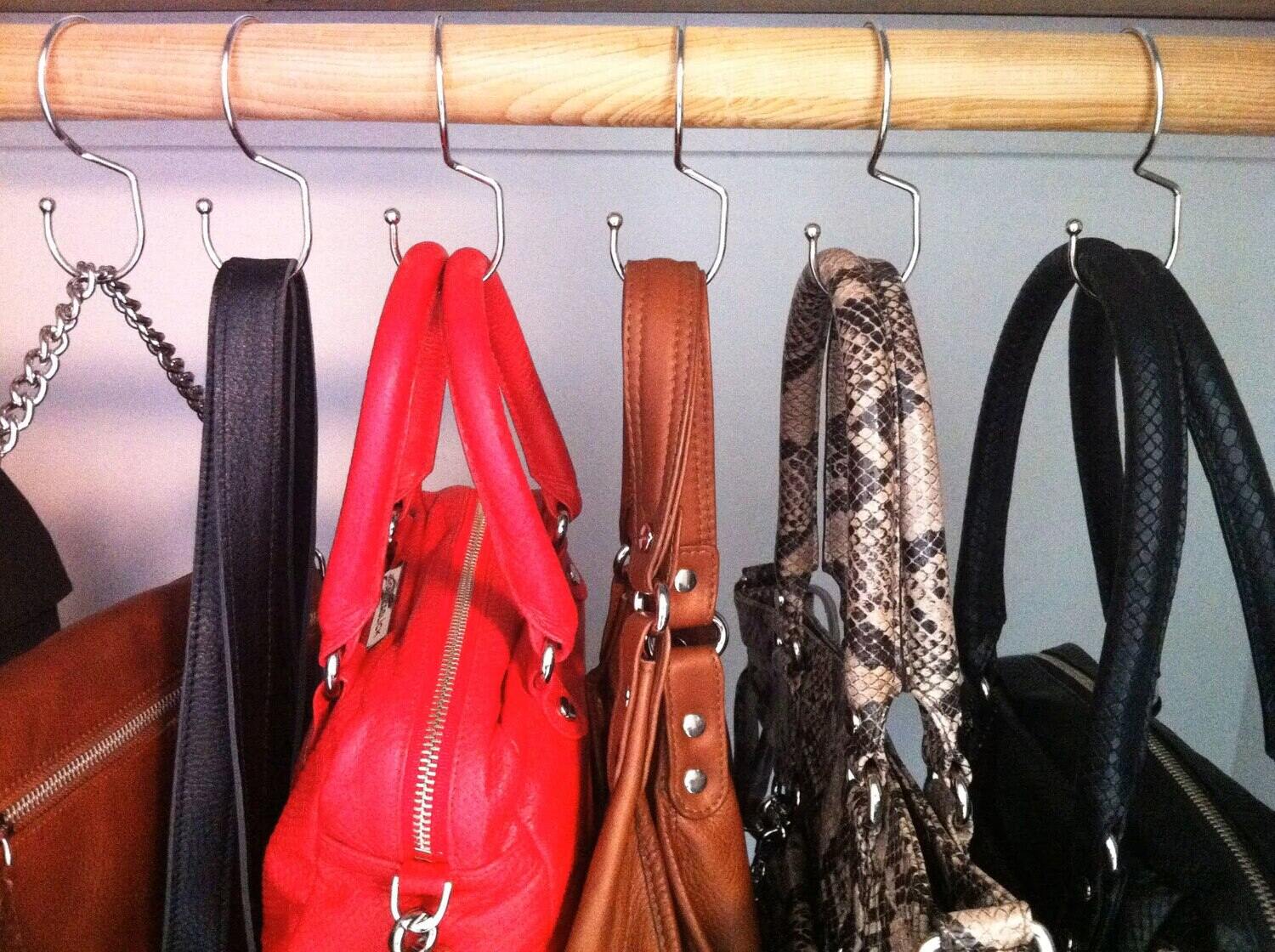
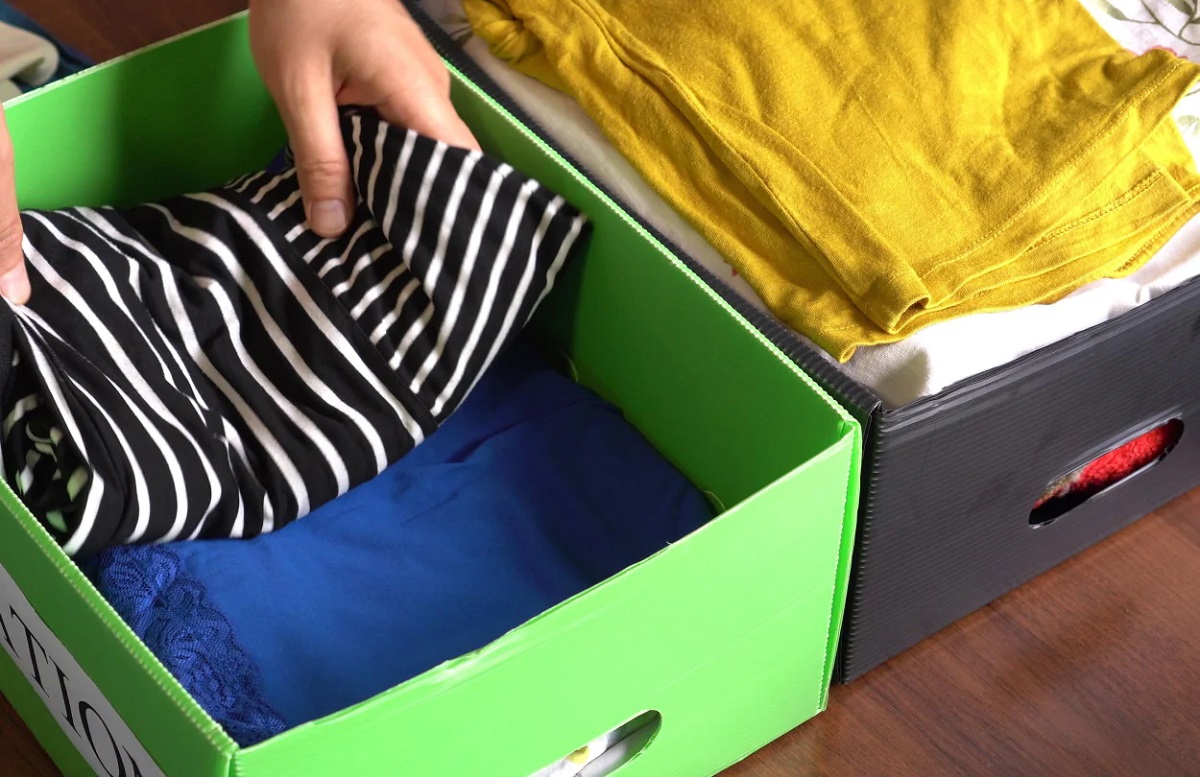
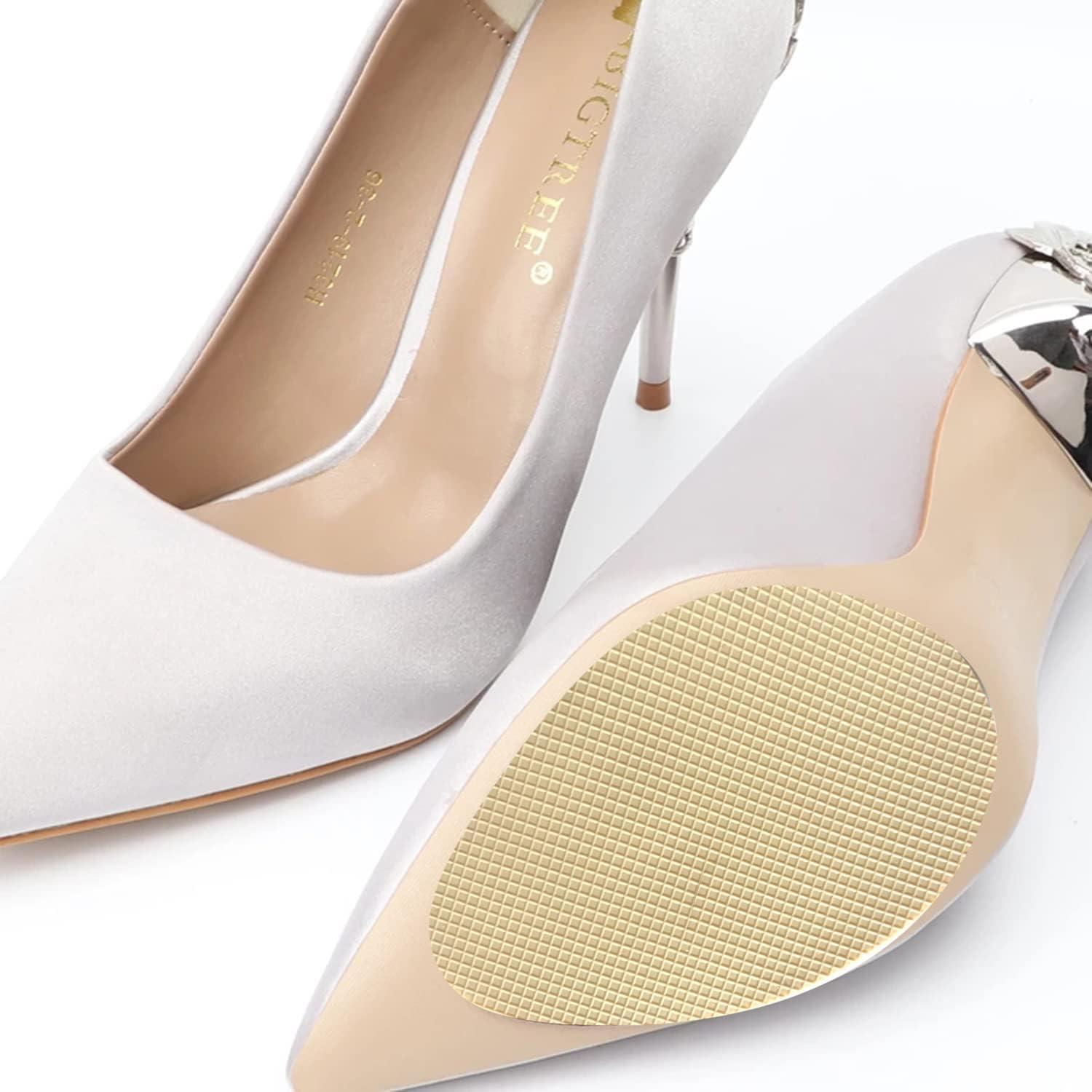
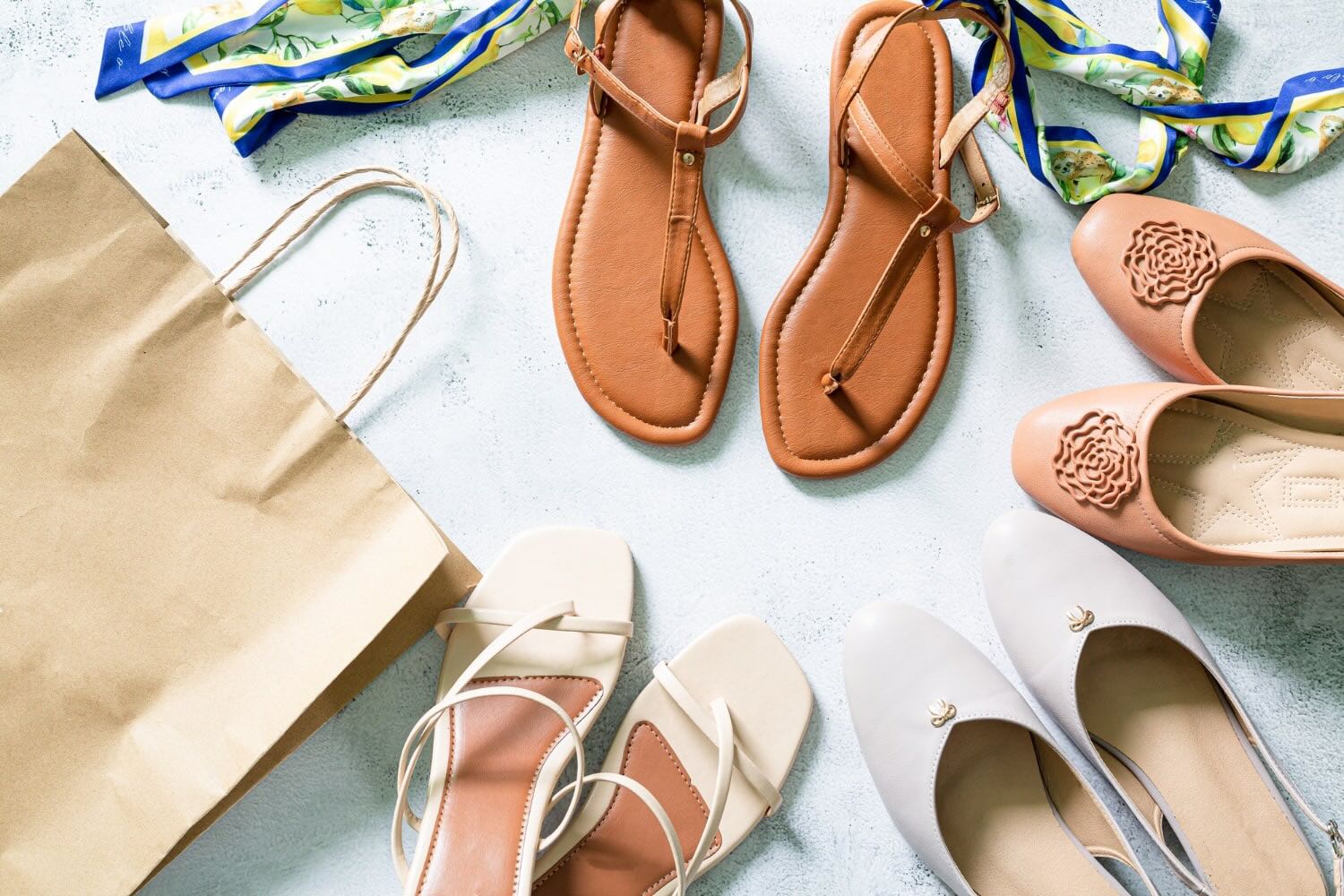
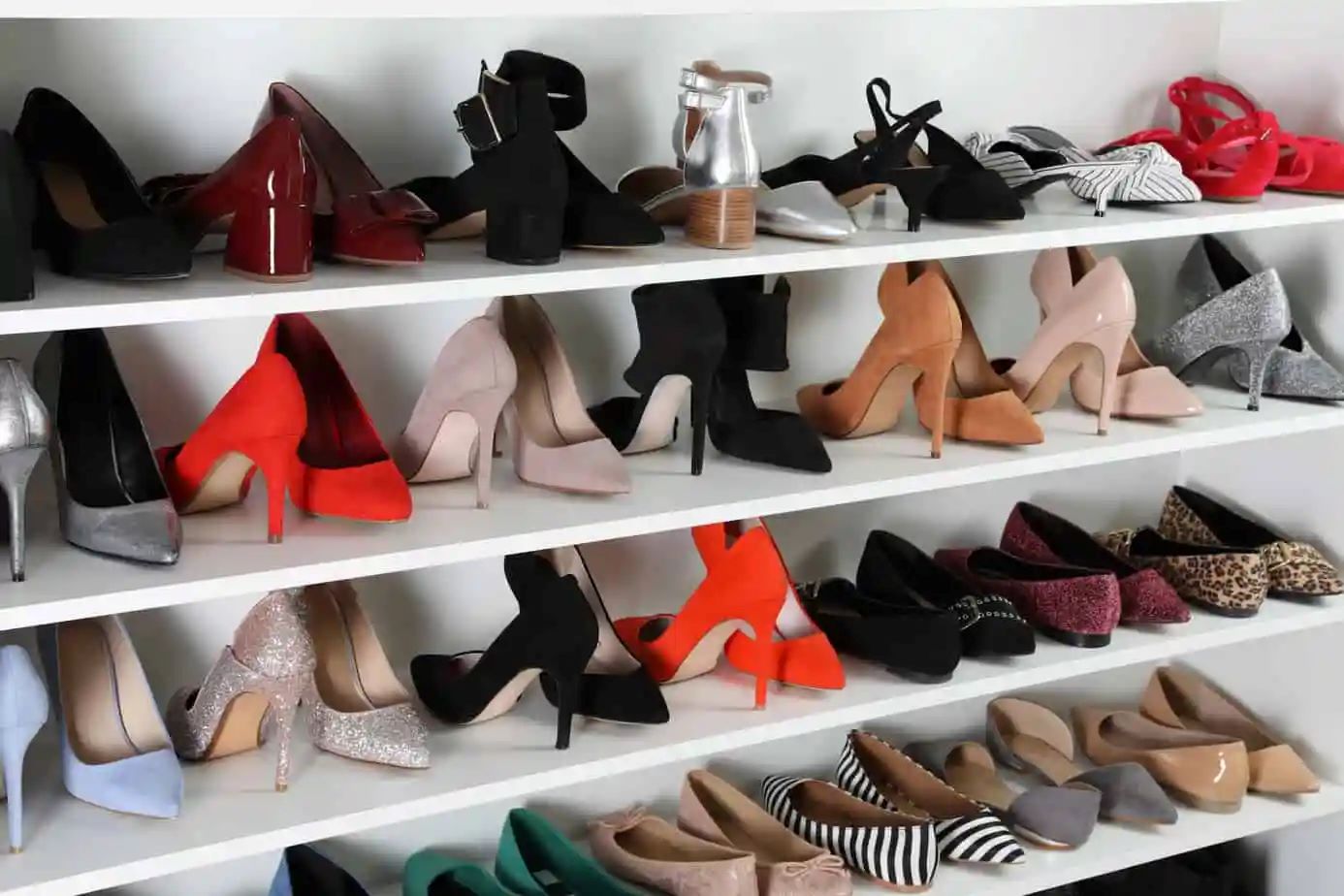
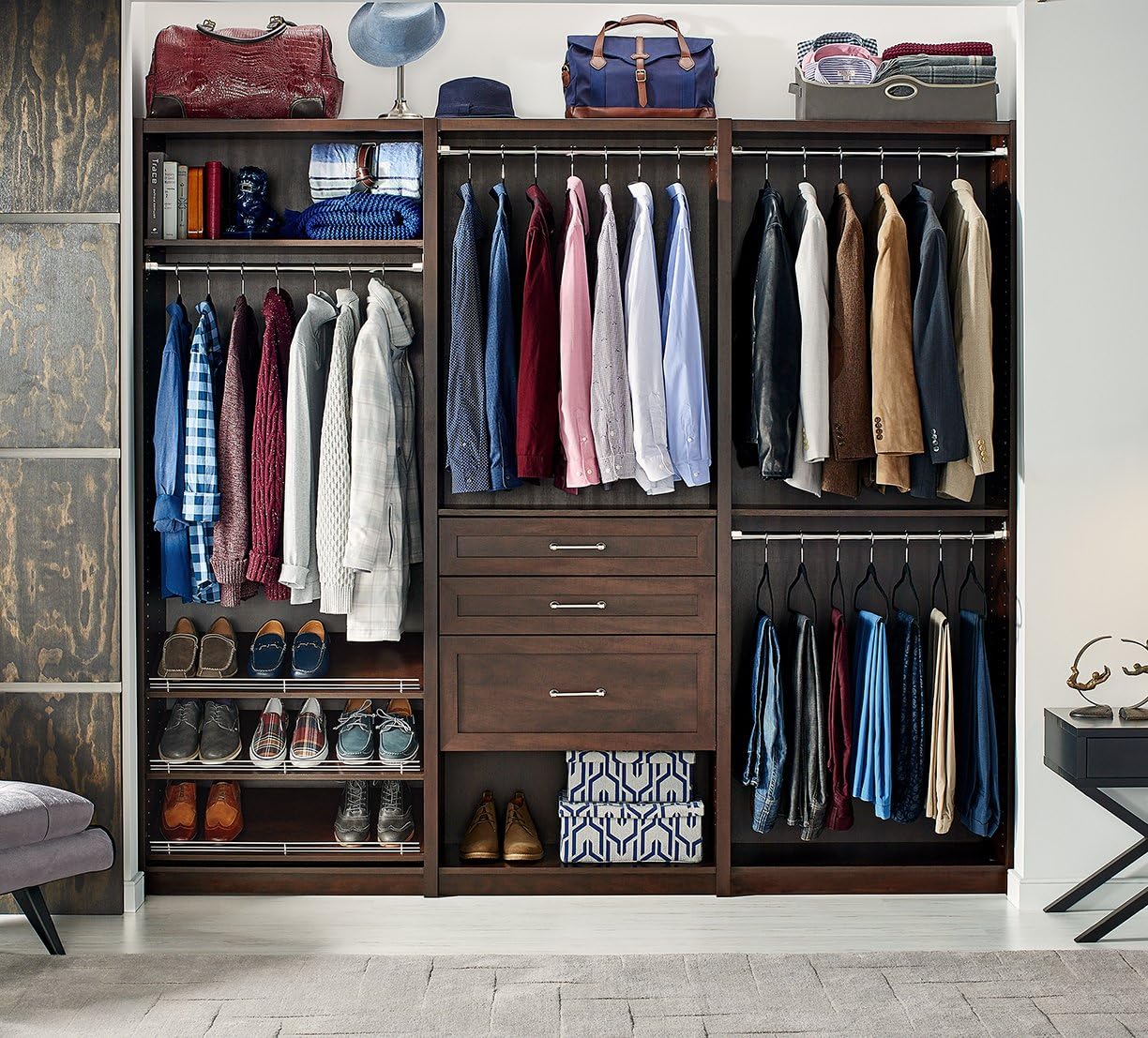
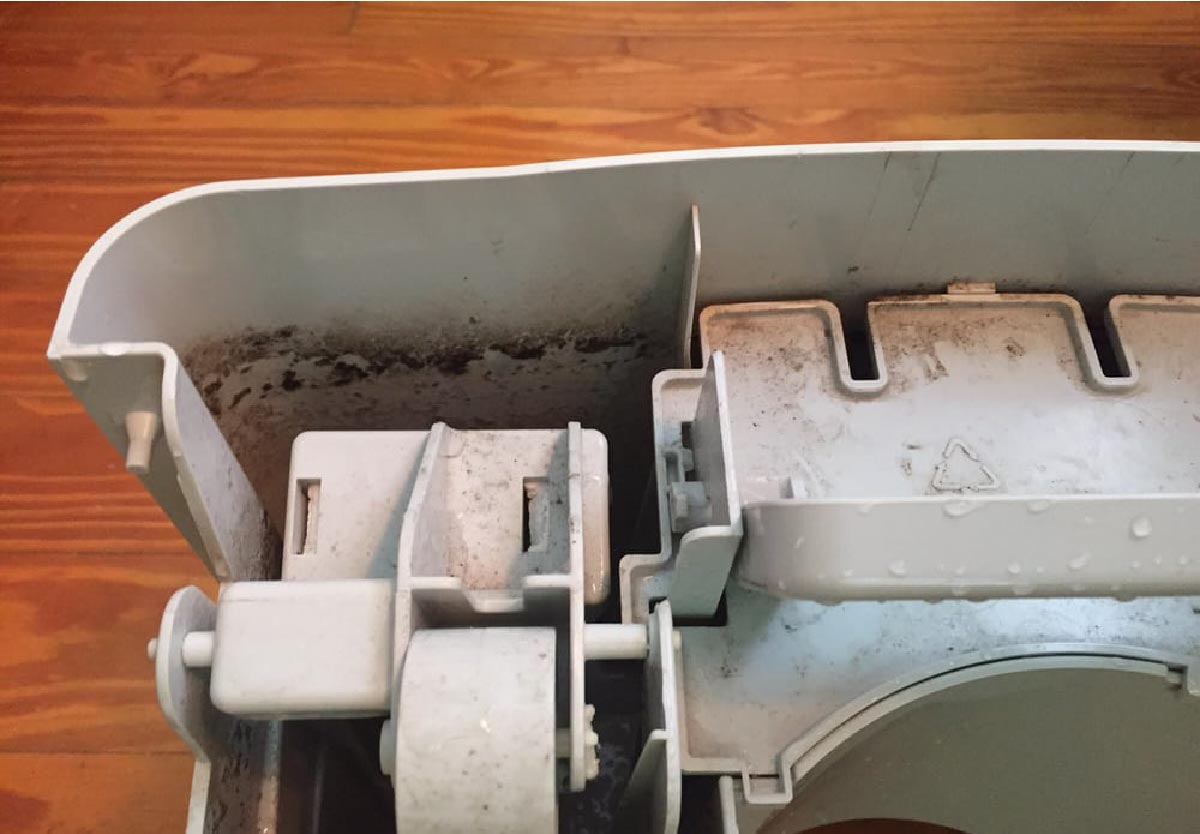

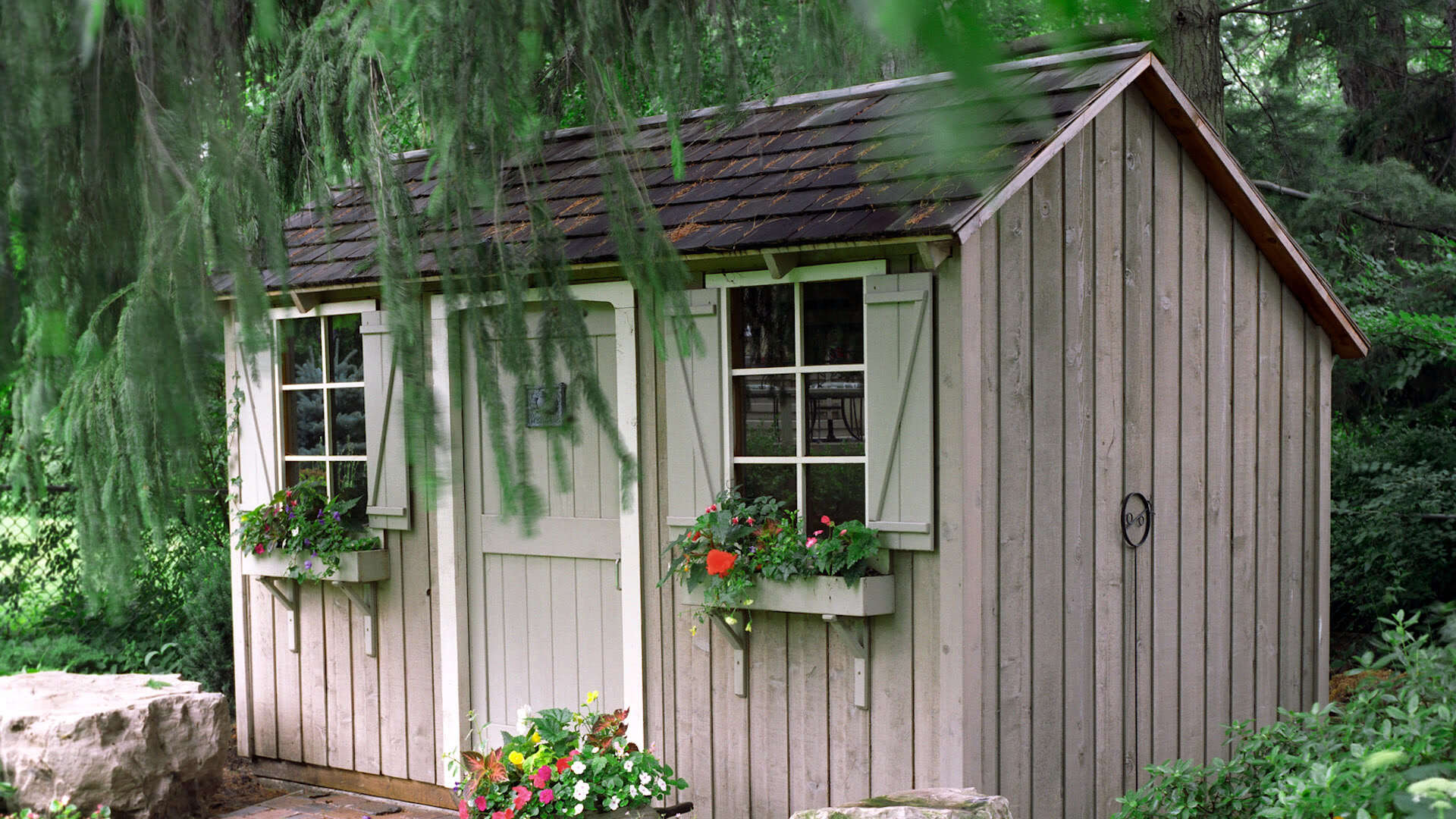
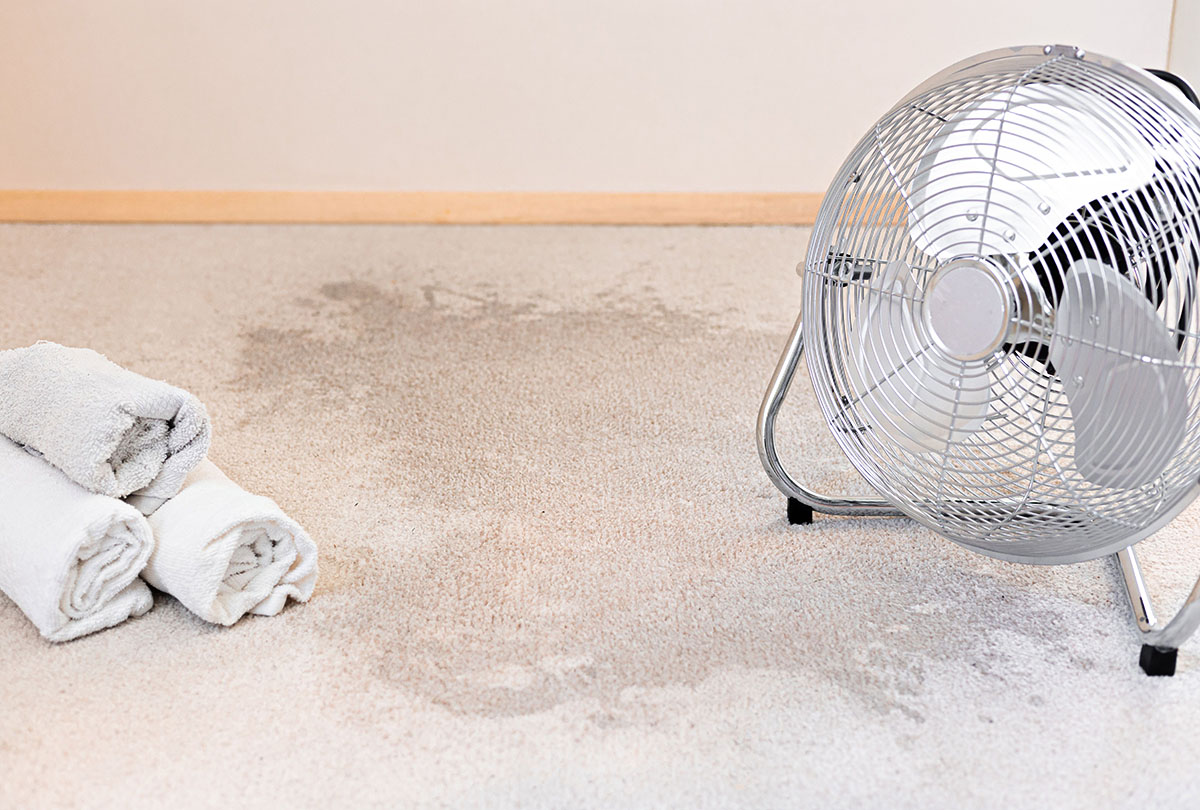
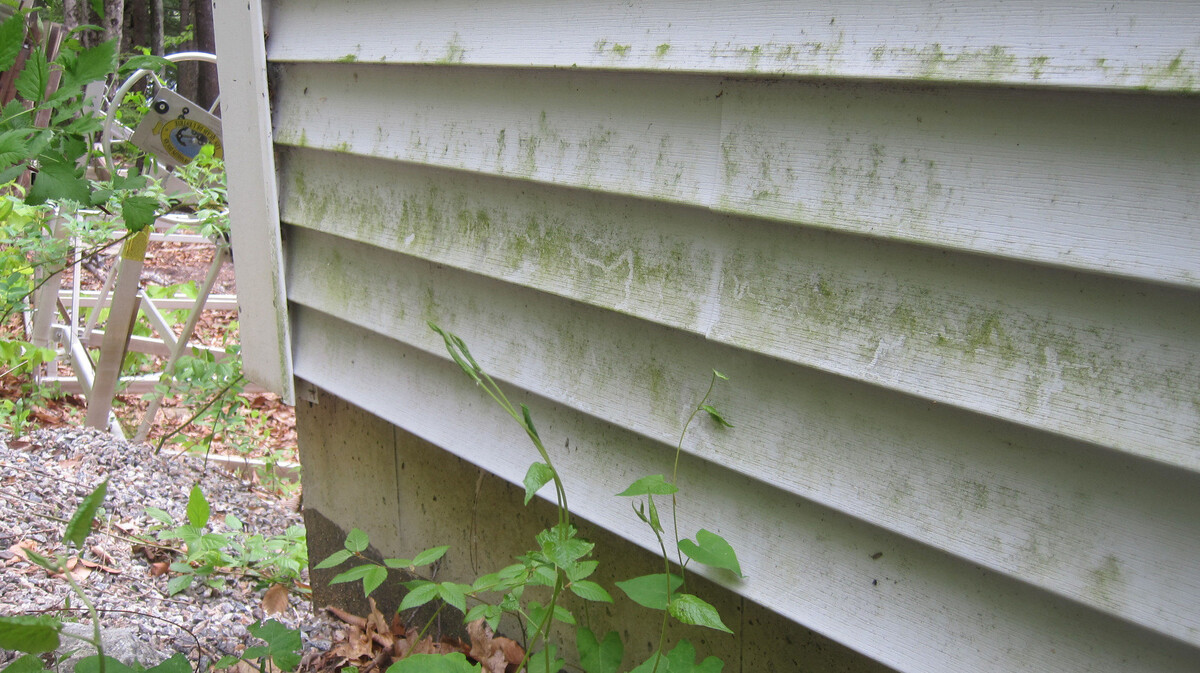
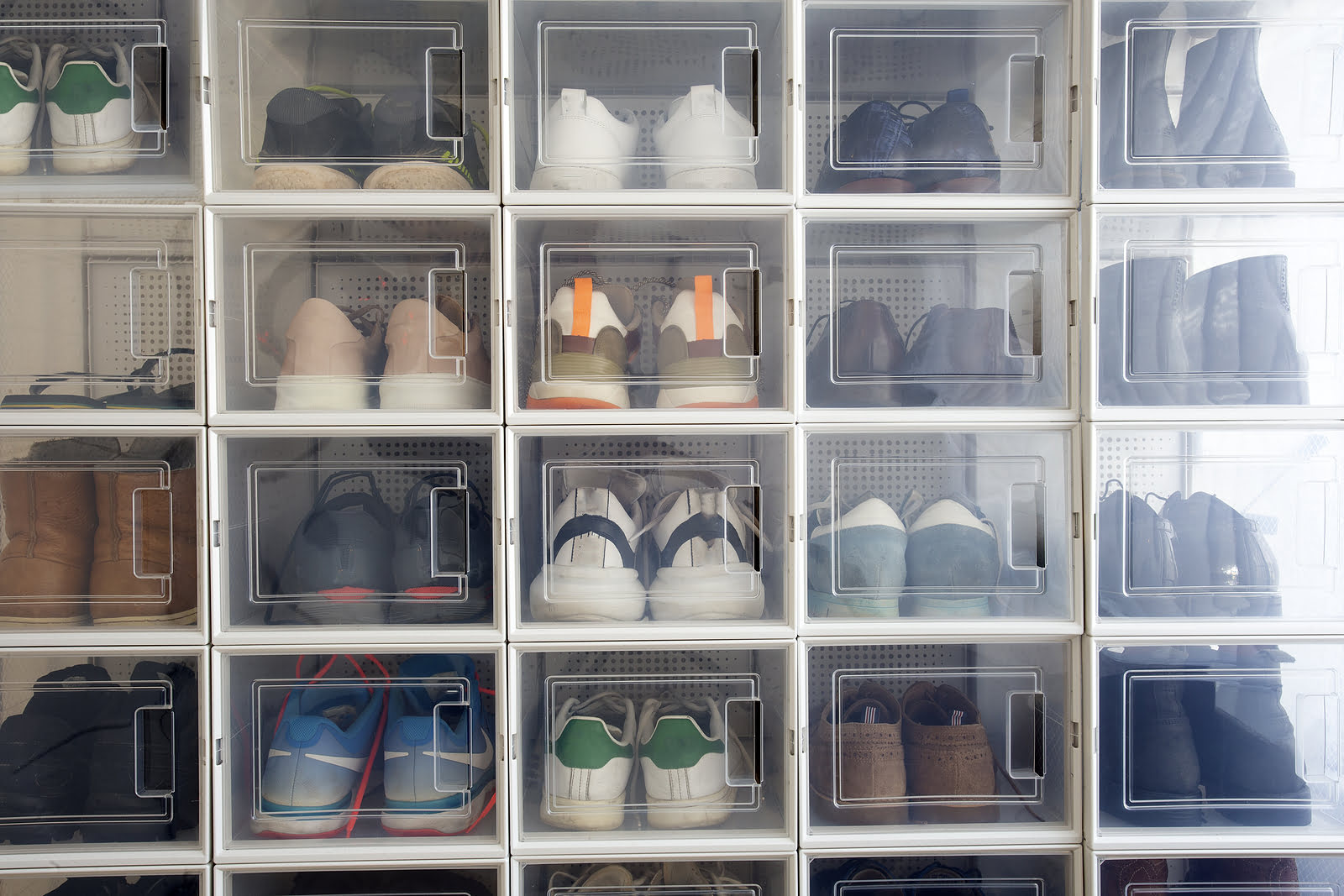
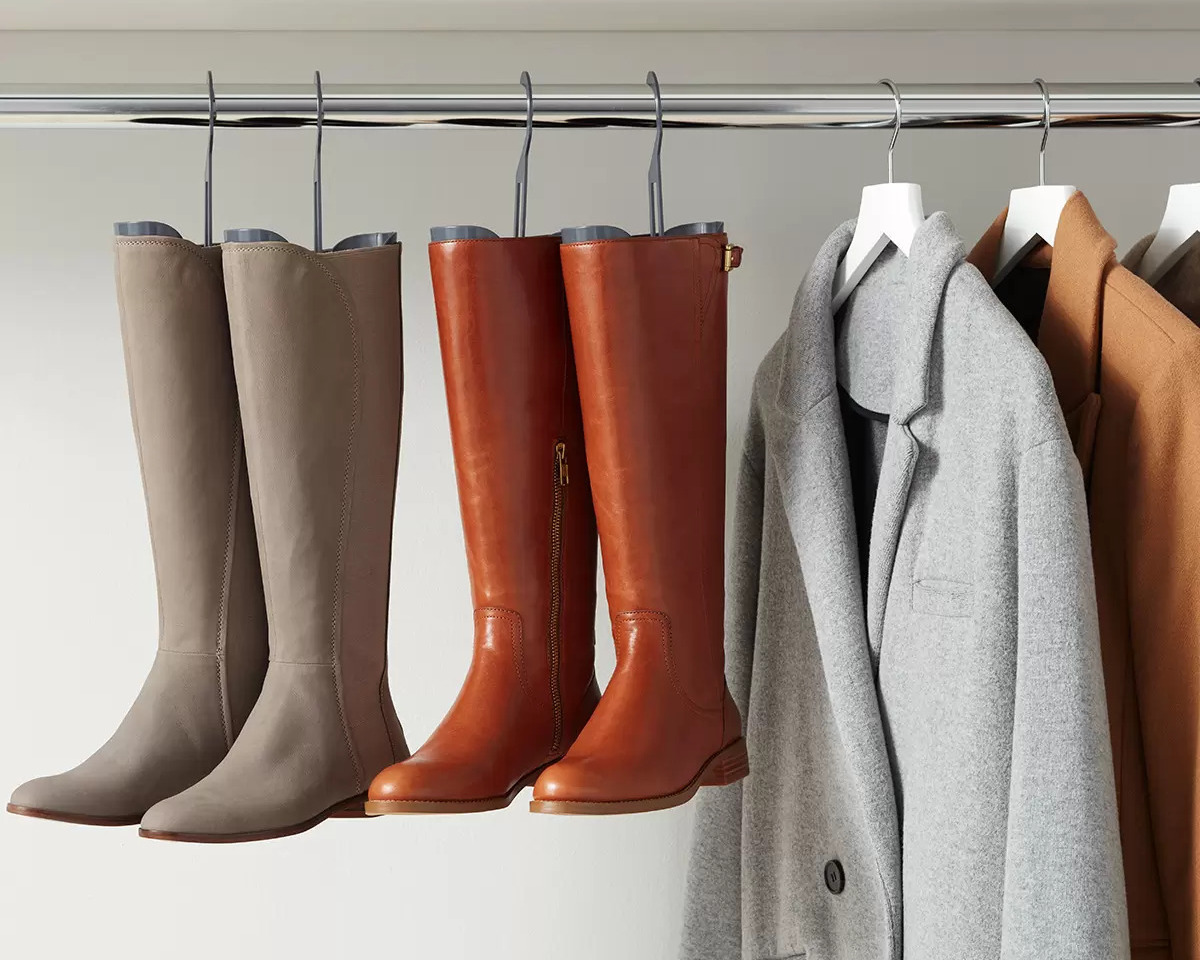

0 thoughts on “How To Store Shoes To Prevent Mold”